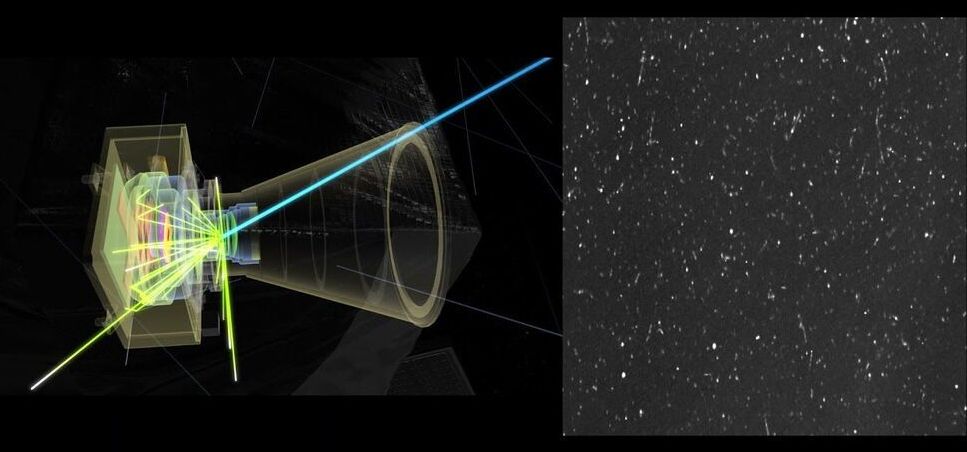Trapped ions discovered at midlatitudes can have energies exceeding 100 megaelectron volts per nucleon. Their detection adds to our understanding of the powerful radiation environment around Jupiter.
Jupiter’s planetary radiation environment is the most intense in the solar system. NASA’s Juno spacecraft has been orbiting the planet closer than any previous mission since 2016, investigating its innermost radiation belts from a unique polar orbit. The spacecraft’s orbit has enabled the first complete latitudinal and longitudinal study of Jupiter’s radiation belts. Becker et al. leverage this capability to report the discovery of a new population of heavy, high-energy ions trapped at Jupiter’s midlatitudes.
The authors applied a novel technique for detecting this population; rather than using a particle detector or spectrometer to observe and quantify the ions, they used Juno’s star-tracking camera system. Star trackers, or stellar reference units (SRUs), are high-resolution navigational cameras whose primary mission is using observations of the sky to compute the spacecraft’s precise orientation. The SRU on board the Juno spacecraft is among the most heavily shielded components, afforded 6 times more radiation protection than the spacecraft’s other systems in its radiation vault.










Comments are closed.